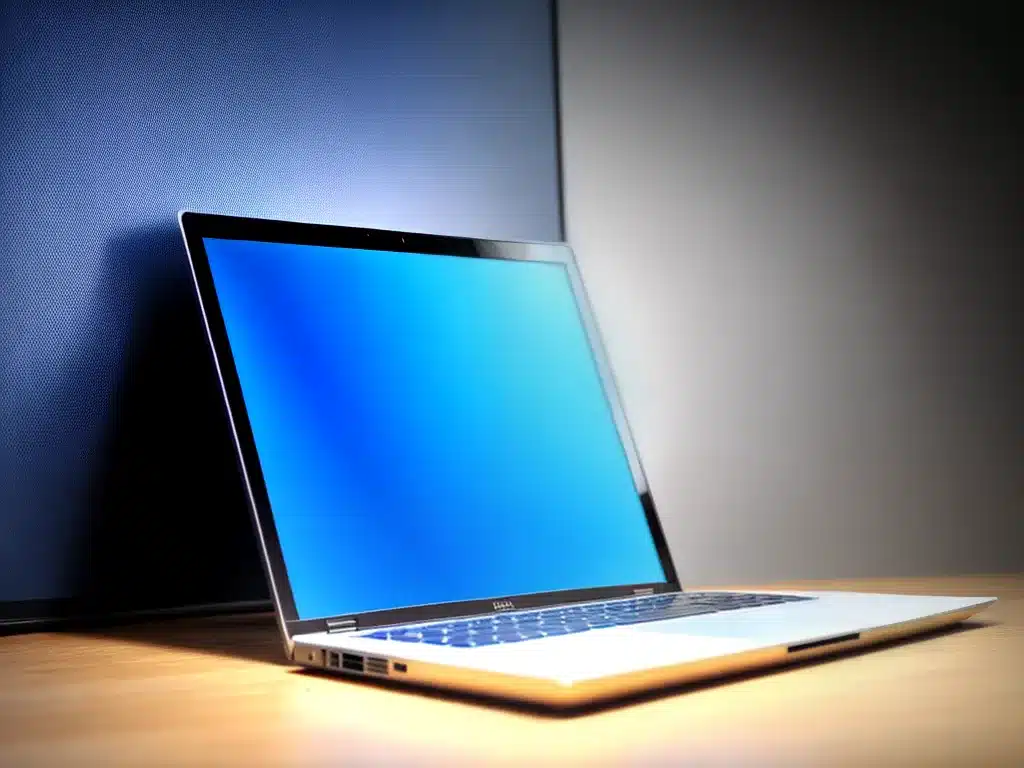
The blue screen of death, commonly abbreviated as BSOD, is one of the most dreaded errors a Windows laptop user can encounter. I know from personal experience how frustrating it can be when your laptop suddenly crashes and displays a cryptic blue screen.
In this article, I will walk you through everything you need to know about the blue screen of death, including what causes it, how to troubleshoot it, and various methods to try and fix it.
What Causes the Blue Screen of Death in Laptops?
The BSOD is caused when a critical error occurs that forces your laptop to shut down to prevent further damage. Some common causes include:
Hardware Failures
Faulty RAM, failed hard drives, overheating CPUs, and other hardware failures can readily trigger blue screens. As laptop hardware ages, it becomes more prone to failures that cause BSOD errors.
Driver Issues
Problematic device drivers for graphics cards, WiFi cards, and other components can cause blue screen crashes. Outdated, buggy, or misconfigured drivers are often to blame.
Software Conflicts
Incompatible or buggy software can also cause BSODs, especially after you install a new program. Conflicts between security software are a common source of laptop blue screen errors.
System File Corruption
Critical Windows system files becoming corrupted or damaged can prevent Windows from working properly, resulting in a blue screen crash.
Malware
Viruses, trojans, spyware, and other malware are notorious for causing blue screen crashes. Malware can corrupt system files, alter sensitive settings, and interfere with critical software.
Troubleshooting the Blue Screen of Death
When faced with the BSOD, the first step is troubleshooting to identify the potential cause. Here is how to troubleshoot and analyze the blue screen error:
Check the Error Message
The blue screen contains an error name and code that offers clues about what went wrong. Write down the error details so you can research the issue. Common error codes include PAGE_FAULT_IN_NONPAGED_AREA, IRQL_NOT_LESS_OR_EQUAL, and KMODE_EXCEPTION_NOT_HANDLED.
Scan for Malware
Run a thorough malware scan using a quality antivirus program. Eliminate any viruses, trojans, or other infections that may be triggering the BSOD.
Update Device Drivers
Update any outdated drivers, focusing especially on GPU, WiFi, and motherboard drivers. Newer drivers may fix compatibility issues causing crashes.
Monitor Your Temperatures
Use software like Speccy to check your CPU and GPU temperatures. Overheating components can definitely cause blue screens.
Test Your RAM
Use the Windows Memory Diagnostic tool to scan your RAM for errors. Faulty memory sticks are a common source of the BSOD.
Back Up Important Data
Before attempting repairs, be sure to back up important files in case you need to reinstall Windows or reset your laptop.
Fixing the Laptop Blue Screen of Death
Once you have completed your troubleshooting, try these solutions to fix the root cause and stop blue screen crashes:
Perform a Clean Boot
A clean boot disables non-essential software. If the BSOD stops occurring, slowly re-enable programs until you identify any incompatible apps.
Update Windows
Install the latest Windows updates, which often contain fixes for blue screen-causing bugs and vulnerabilities.
Roll Back Recent Changes
If the blue screens started after you made a change, like installing new software or drivers, roll back the change to see if problems stop.
Repair corrupt system files
Use System File Checker to scan for and restore corrupted system files that could be crashing Windows.
Update Firmware and the BIOS
A BIOS update can resolve motherboard-related blue screen issues. Be cautious and follow instructions closely when flashing the BIOS.
Replace Faulty Hardware
If your RAM or hard drive is defective, replacing the component may be required to solve BSOD issues.
Reset Windows
Resetting Windows will reinstall the operating system while preserving your personal data and settings. This can eliminate software-related blue screens.
Clean Reinstall Windows
If all else fails, perform a clean reinstall of Windows. This completely erases and reinstalls Windows from scratch. It’s an effective last resort when dealing with persistent BSOD errors.
Conclusion
Dealing with blue screen crashes can be stressful. By carefully analyzing the error details, troubleshooting methodically, and trying potential solutions, you can isolate the underlying problem causing your laptop’s BSOD and get your system stable again. Pay attention to the error message and be patient while testing fixes. With some diligent effort, you can conquer the blue screen of death.












